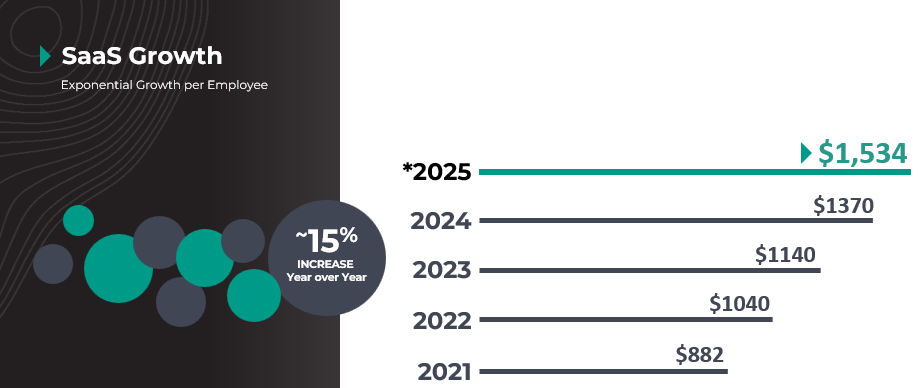The Hidden Cost of Poor SaaS Management
While SaaS applications have brought agility, scalability, and accessibility, they also create a maze of hidden costs. Tools that empower productivity can quickly spiral into a tangled web of unmanaged subscriptions, redundant licenses, and security vulnerabilities. Without a solid SaaS management strategy in place, organizations risk paying not just with their budgets—but with their data.
The High Cost of SaaS Sprawl
SaaS sprawl occurs when applications proliferate across the organization without centralized oversight. Employees and teams often purchase and onboard software independently, outside formal IT channels. An increasingly fragmented tech stack that’s difficult to track, optimize, or secure.
This lack of control introduces serious financial and operational consequences:
- Redundant application instances go unnoticed and rack up costs.
- Duplicate Subscriptions lead to overspending.
- Unused licenses linger, draining budgets with zero return.
- Contract renewals happen automatically—often without scrutiny or negotiation.
While these costs may seem minor in isolation, across a large organization they compound rapidly. Without a SaaS management tool to provide centralized control and visibility, these compounding costs can become exponential.
Encountering Security Breaches
Beyond the financial waste, poor SaaS management exposes organizations to significant security risks. With more apps comes more data, more user accounts, and more opportunities for attackers.
How unmapped SaaS contributes to breaches:
- Shadow IT—apps deployed without IT’s knowledge—bypasses governance and often lacks necessary security controls.
- Inconsistent offboarding leaves orphaned accounts with access to sensitive data.
- Unvetted vendors may not meet internal compliance or security requirements.
- Lack of SaaS visibility makes it nearly impossible to enforce identity and access management policies across tools.
When breaches are traced back to an unmanaged or unauthorized SaaS app, a financial hit turns into a credibility crisis.
Navigating the Fog of Low SaaS Visibility
Lack of visibility is one of the most damaging symptoms of SaaS sprawl. Without clear data on what applications exist, who uses them, and how often, organizations cannot make informed decisions around spend or security.
Consider these common challenges:
- Multiple teams using different tools for the same purpose (e.g., five different project management apps across departments).
- No standardized process for onboarding or evaluating new tools.
- Inability to reconcile app usage with contract value, making renewals inefficient and expensive.
This is where SaaS tracking software becomes essential. Visibility isn’t a luxury—it’s a prerequisite for SaaS optimization, license right-sizing, and risk reduction.
Centralizing SaaS Expense Management
Taming the chaos starts with centralization. By investing in a purpose-built SaaS management platform, IT leaders can shift from reactive firefighting to proactive governance.
Here are best practices to put into motion:
- Inventory Every SaaS Application
- Use a SaaS management software tool to discover and catalog all applications in use, including shadow IT
- Track Usage Continuously
- Monitor license utilization, active users, and engagement metrics to identify underused or unused tools
- Consolidate and Rationalize
- Remove redundant apps and shift toward enterprise-wide tools with clear ROI
- Establish Approval Workflows
- Put guardrails in place so new SaaS purchases go through IT review, avoiding future sprawl
- Run Regular SaaS Audits
- Treat SaaS like any other asset—subject to periodic review, cleanup, and optimization
The right SaaS management tool can automate a lot of this work. It can show insights that would be hard to collect by hand. It provides a single pane of glass into usage, spend, security risks, and contract timelines.
Uncover SaaS for What It Is—and What It Could Be
SaaS applications are necessary tools in organizations today. But without the right visibility and controls in place, it can quietly become one of your biggest liabilities.
By prioritizing SaaS visibility, using intelligent SaaS tracking, and investing in automation, IT leaders can eliminate waste, reduce risk, and empower their organizations to scale smarter.
Poor SaaS management is expensive. Proactive SaaS management is a competitive edge.
Ready to take control of your SaaS Estate?
Book a demo today and see how you can optimize your global technology management.
Calero | Technology Business Management Solutions
Optimize costs, inventory, and operations for SaaS, mobility, telecom, and beyond with a single unified technology business management platform.




